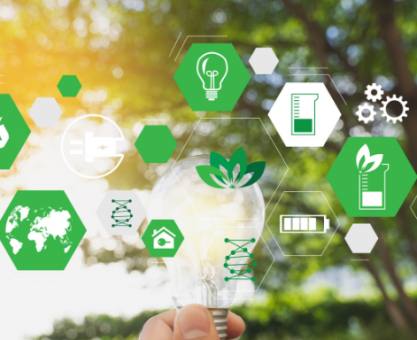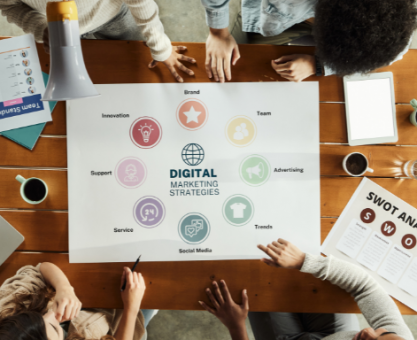Executive Summary
-
Explore how digital transformation can drive sustainable business practices.
-
Understand the benefits and challenges associated with integrating digital technologies for sustainability.
-
Learn from a real-world case study demonstrating successful digital transformation in a sustainable-focused company.
-
Discover expert tips and strategic insights for implementing digital solutions effectively.
-
Access resources and tools to aid in your digital sustainability journey.
Introduction
In today’s rapidly evolving business environment, companies are under increasing pressure to adopt sustainable practices—not only from regulatory bodies but also from customers demanding eco-conscious solutions. Digital transformation offers a powerful pathway to achieving sustainability by enabling smarter, more efficient operations. This article explores how businesses can harness digital tools to support greener outcomes, illustrated with a real-world case study that brings the concept to life.
Definitions / Context
What is Digital Transformation in Sustainability?
It refers to the integration of digital technologies like IoT, AI, blockchain, and big data into business processes to improve environmental performance, resource management, and operational efficiency.
Core Elements
-
IoT: Tracks energy use and equipment efficiency.
-
AI & Analytics: Predicts waste reduction opportunities and optimizes supply chain flows.
-
Blockchain: Adds transparency to procurement and materials sourcing.
-
Automation: Streamlines repetitive tasks, reducing energy and time consumption.
Benefits / Pros
-
Efficiency Gains – Automated systems and real-time data tracking help companies reduce waste, water use, and emissions.
-
Data-Driven Sustainability – Enhanced visibility enables targeted action and measurable results.
-
Brand Trust – Tech-enabled transparency appeals to investors and eco-conscious consumers.
-
Financial Return – Digital optimization reduces operating costs and unlocks new ESG funding opportunities.
Risks / Cons / Challenges
-
High Upfront Costs – Infrastructure investments in software, sensors, and training can be significant.
-
Cybersecurity Concerns – Increased data collection creates more exposure to digital threats.
-
Complex Change Management – Integrating digital tools often requires reshaping organizational culture and retraining teams.
-
Data Overload – Without strategic goals, businesses may gather more data than they can meaningfully act on.
Step-by-Step Implementation Framework
-
Vision & Assessment – Define sustainability goals and assess current technological capabilities.
-
Pilot Projects – Start with small, department-specific digital trials to test tools and identify benefits.
-
Data Strategy – Set clear KPIs for environmental performance and deploy data-collection systems accordingly.
-
Technology Deployment – Introduce IoT, AI, and automation tools in phases, starting with high-impact areas.
-
Training & Culture – Educate teams on sustainability objectives and the digital tools they’ll be using.
-
Scale & Optimize – Expand what works and continuously monitor performance for iterative improvements.
GreenTech Innovators, a mid-sized manufacturing firm, deployed IoT sensors across its production lines to monitor electricity, water, and heat usage in real time. Coupled with data analytics, they identified inefficiencies in cooling systems and adjusted operations accordingly.
Within the first year, they saw a 30% reduction in energy costs and a 25% decrease in carbon emissions. The project enhanced their ESG scores and won industry recognition, positioning the brand as a climate-positive leader.
— GreenTech Innovators
Expert Tips / Strategic Insights
-
Pilot Before You Scale – Epiidosis recommends starting with a focused pilot that allows room for experimentation before full-scale integration.
-
Invest in People, Not Just Tech – Human adoption is crucial. Train your team early and offer upskilling pathways.
-
Audit Your Progress – Schedule quarterly performance reviews using sustainability scorecards.
-
Choose the Right Tools – Prioritize platforms and software with proven ROI and customizable analytics dashboards.
Tools / Resources / Calculators
-
Carbon Trust Calculator – A comprehensive tool to measure and manage carbon emissions.
-
Energy Star Portfolio Manager – Useful for benchmarking energy performance across buildings.
-
AWS IoT for Sustainability – Scalable infrastructure to connect and monitor devices for energy and emissions management.
-
Sustainable Digital Roadmap (Epiidosis) – A proprietary planning guide tailored for SMEs integrating sustainability tech.
Conclusion
Digital transformation is no longer optional—especially for businesses committed to long-term sustainability. Technologies like IoT, AI, and blockchain are reshaping how organizations consume resources, track their impact, and report performance. As shown by GreenTech Innovators, even mid-sized firms can achieve measurable results in a short time. The journey may begin with one sensor or one system—but it ends with a future-proof, greener organization.






















